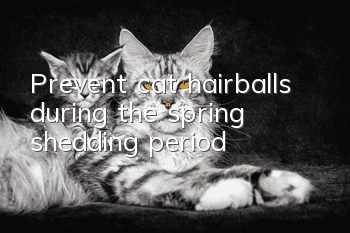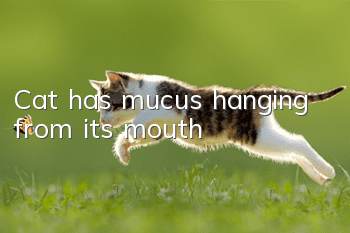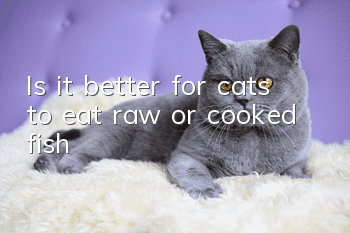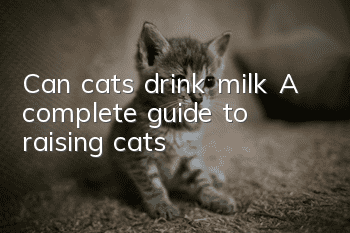Prevent cat hairballs during the spring shedding period!

The Spring Festival has passed, the temperature is rising day by day, and spring is coming soon. Cats are ushering in their hair shedding period. In order to adapt to seasonal changes, cats need toreplace their soft, dense winter hair, which is good for keeping warm, with rough, sparse spring hair, which is good for heat dissipation. The cat's shedding season is a big test for its owners.
On the one hand, the owner has to clean up the cat hair scattered in every corner of the room. On the other hand, owners should also be alert to whether cats have the following mysterious symptoms:
Does your cat sometimes eat grass, or even plastic bags or paper towels?
Does a cat retching frequently after eating?
During retching, you either can't spit out anything, or you spit out some cylindrical hairballs covered with mucus?
If your cat shows the above symptoms, please note that it may be suffering from "hair ball syndrome".
The shedding period in spring is the season when cats suffer from hairball disease. If not handled properly, hairballs may cause constipation and loss of appetite in pets, seriously affecting their health. Today, I will take you to learn about the causes and prevention methods of hairball syndrome, so that cats can spend the spring molting period safely and healthily.
Hairball disease—a disease caused by cats’ “hermephobia”
As we all know, cats are clean animals and they will constantly lick their fur with their tongues to keep their bodies clean.
Since there are many barbs oncats’ tongues, they will swallow all the cleaned hair and other dirt into their stomachs. During the spring moulting period, the amount of hair swallowed by cats increases significantly.
Some of the hairs swallowed into the stomach are excreted with the stool, and the other part remains in the stomach and gradually grows in size. When the size reaches a certain level, the cat will spit out the hair balls in the stomach through vomiting. Sosometimes cats will eat grass to induce vomiting. The remaining hair balls will be deposited in the gastrointestinal tract and become larger and larger. Eventually, the deposited hair balls will seriously affect the cat’s digestion and movement, becoming a health killer for the cat.
Symptoms and dangers of hairy bulb syndrome
What symptoms will appear if a cat suffers from hairball disease?
The various mysterious behaviors of cats mentioned above are the initial symptoms of hairball syndrome, namely: Cats will frequently retching, especially shortly after eating, some cats will eat plastic bags , paper towel or grass. Sometimes you will spit out some cylindrical hairballs with mucus on the surface, but sometimes nothing will be spit out; the stool is dry and hard, with some hair in it.
When the condition worsens, the cat will lose appetite and become less interested in exercising. At the same time, the hair is rough and dull. Severe constipation may also occur. If not treated in time at this time, the cat's condition will get worse and worse. As soon as he drinks water or eats something, he will vomit it out quickly, because the hair ball may have blocked the gastrointestinal tract and thus If obstruction occurs, the cat will soon experience dehydration and internal organ failure. At this time, surgery can only be treated.
Therefore, if hairball syndrome is not prevented in time and effectively prevented, the consequences will be disastrous. And if you take proper care of your pet's fur during the shedding period, you can effectively prevent hairballs and give your cat soft, shiny and smooth fur. Let the cat's appearance soar.
How to effectively prevent hairballs
1.Bathe your cat regularly
Bathing can remove the scattered hair from the cat’s body at the source and greatly reduce the amount of hair that the cat swallows into its body.
At the same time, bathing can also prevent the growth of bacteria. Reduces your cat’s risk of skin diseases.
Pet owners must choose the appropriate care solution. Wrong or inappropriate care solution can cause harm to the cat's fur. There are different types of cat care solutions, including those that lubricate cat hair, those that remove fleas, and those that are nutritious.
It should be noted thatthe treatment solution for removing fleas cannot be used frequently.
Some care solutions need to be used in water, so pet owners should read the instructions carefully.
2.Brush your cat frequently
Grooming in time is also to help the cat remove the hair that falls on the body and prevent it from being swallowed by the cat. Grooming a cat is not an easy task. The owner must choose a suitable comb and appropriate grooming techniques.
Cat combs are divided into cat face combs and cat body combs.
When combing a cat's face, be gentle and slow, and try not to comb it from head to tail at once. When you encounter knotted areas, press the roots of the hair with your hands, and then comb it later, just like how we comb hair.
The method of combing the cat's body is the same as the cat's face. Be careful to be gentle when combing the sides of the cat's belly, as cats are very sensitive there. You can comb the neck several times and the cat will enjoy it.
Combs come in different thicknesses. Thick ones are used for combing hair, while thin ones are used for catching lice.
It is recommended to use a steel comb toIt can be sterilized at high temperature after use, which is very convenient.
3. Pay attention to the cat’s diet
A proper diet is an important factor in helping cats prevent hairballs. On the one hand, the diet should have a comprehensive nutritional supply to help cats keep their fur soft and prevent hair loss. On the other hand, cats also need dietary adjustments to expel hair balls from their bodies.
In the nutritional diet of cats,zinc, fatty acids and vitamins all play an important role in the health of their hair. Cat food during the shedding period should ensure the supply of these elements.
Although the content of zinc in cats' bodies is low, it is present in almost all body tissues, affecting the synthesis of collagen and keratin, and is the basis for healthy hair. In addition, sufficient linoleic acid is also the guardian of cats’ soft and shiny hair. Omega-6 fatty acids are nutrients that cats must obtain in sufficient amounts from their daily food. If they are deficient, they will cause dry skin, easy inflammation and shedding, dull coat color and other coat health problems.
At the same time, it is best for cat food to contain plant and crude fiber ingredients, which can effectively prevent hair balls from gathering in the digestive tract and help cats expel hair balls from the body.
It can be seen that the moulting period is a huge challenge to the health of cats. Here, the considerate student recommends a professional hair ball removal cat food to help cats avoid hair ball syndrome during the shedding period~
- What do cats need to prepare before surgery? Be sure to remember these!
- What should a Ragdoll cat eat during pregnancy?
- What are the characteristics of Siamese cat pregnancy?
- Things to note when deworming cats
- The manifestations and symptoms of ear mites in cats, understand these knowledge and deal with them easily!
- How to prevent cats from having heatstroke in summer It is urgent to prevent heatstroke in summer
- Should a 4-month-old cat eat adult cat food or kitten food?
- How to prevent your cat from accidentally running out
- Reasons why cats poop randomly
- What to do if a Ragdoll cat loses hair. Reasons why a Ragdoll cat loses hair.



